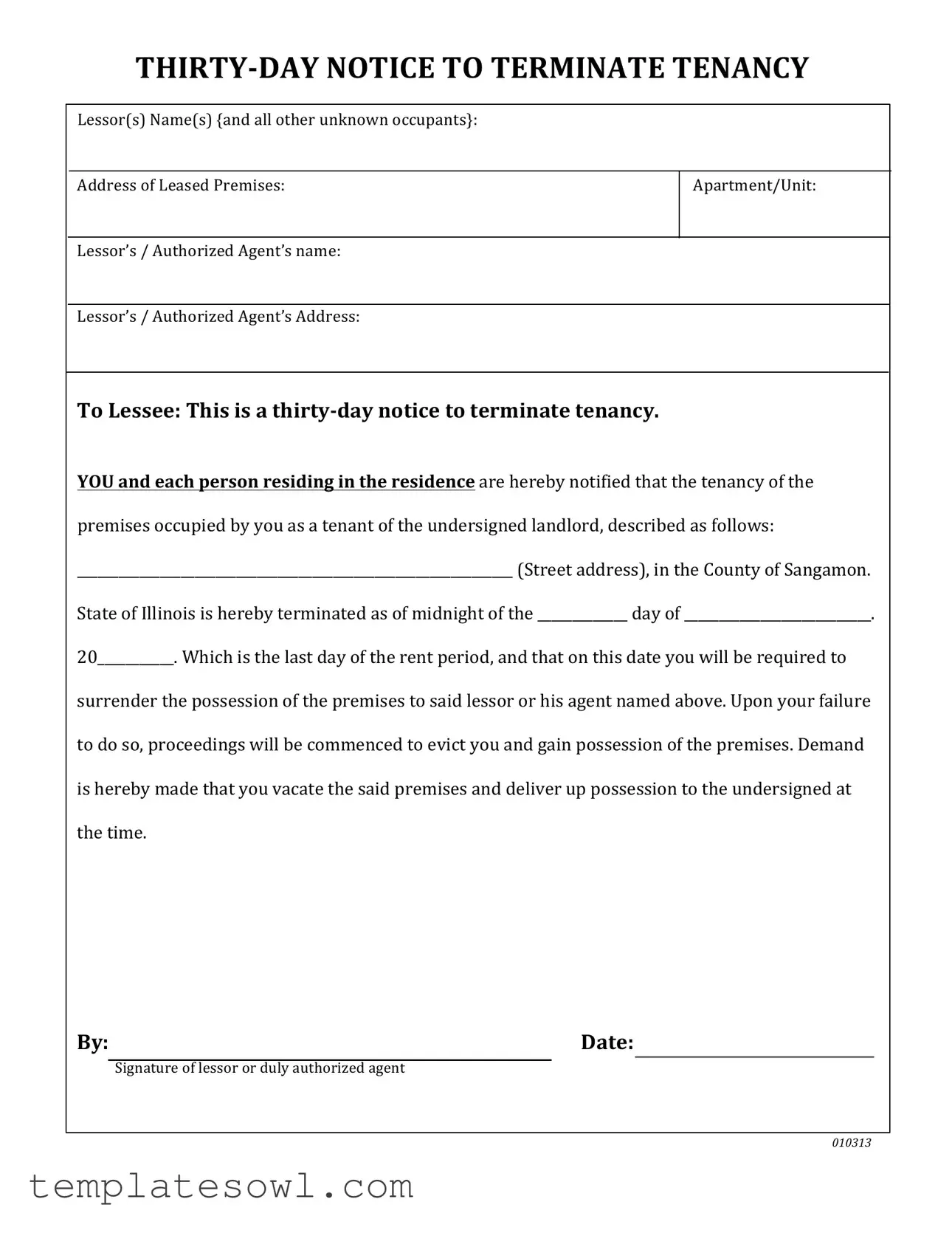What is the Illinois Vacate form?
The Illinois Vacate form is a legal document that a landlord uses to notify a tenant about the termination of their tenancy. This form outlines the landlord's intention to end the rental agreement and specifies the timeline for the tenant to vacate the premises.
How much notice does the landlord need to give the tenant?
In Illinois, the landlord must provide a thirty-day notice to the tenant to terminate the tenancy. This means that the tenant has thirty days from the day they receive the notice to move out of the rental property.
What information should be included in the Vacate form?
The Vacate form should include the names of the landlord and the tenant, the address of the leased premises, and the date by which the tenant must vacate. It should also include any relevant contact information for the landlord or their authorized agent.
What happens if the tenant does not vacate by the deadline?
If the tenant fails to vacate by the deadline specified in the Vacate form, the landlord can initiate eviction proceedings. This means that the landlord may file a lawsuit to legally remove the tenant from the property.
Is the Vacate form required in all rental situations?
The Vacate form is typically required in situations where a landlord wants to terminate a lease or rental agreement. However, the specific requirements may vary based on the type of rental agreement and local laws. It is important to check the applicable regulations.
Can tenants challenge the Vacate form?
Yes, tenants can challenge a Vacate form if they believe the notice was not properly issued or if there are valid reasons to contest the eviction. Tenants should consider seeking legal advice to understand their rights and options in such situations.
How should the Vacate form be delivered to the tenant?
The Vacate form can be delivered to the tenant in several ways, including personal delivery, mail, or posting it on the premises. It is critical to keep a record of how and when the notice was delivered to ensure proper documentation.
What if the tenant and landlord reach an agreement?
If the tenant and landlord come to an agreement regarding the tenant's departure, they should put that agreement in writing. This can help prevent misunderstandings and serve as a record of the terms agreed upon.
Can a tenant request more time to vacate?
A tenant can request additional time to vacate the premises, but it is at the landlord's discretion to grant such a request. Communication between both parties is key in these situations, and the landlord may be willing to accommodate reasonable requests.
Where can I find an official Illinois Vacate form?
Official Illinois Vacate forms can typically be found on the Illinois State government website or at local legal aid offices. Many resources are available online to help landlords and tenants understand the proper procedures and obtain the necessary forms.

